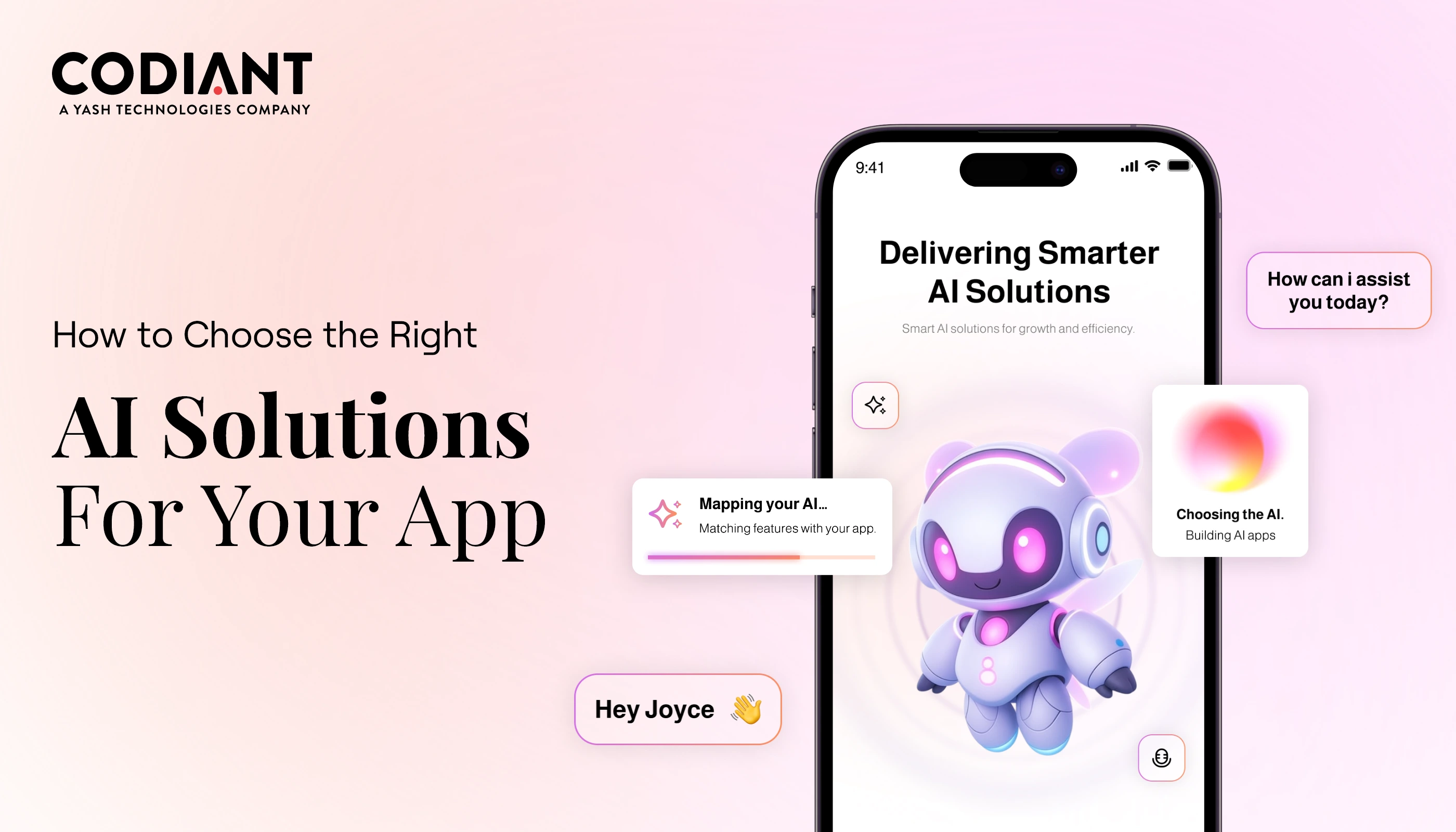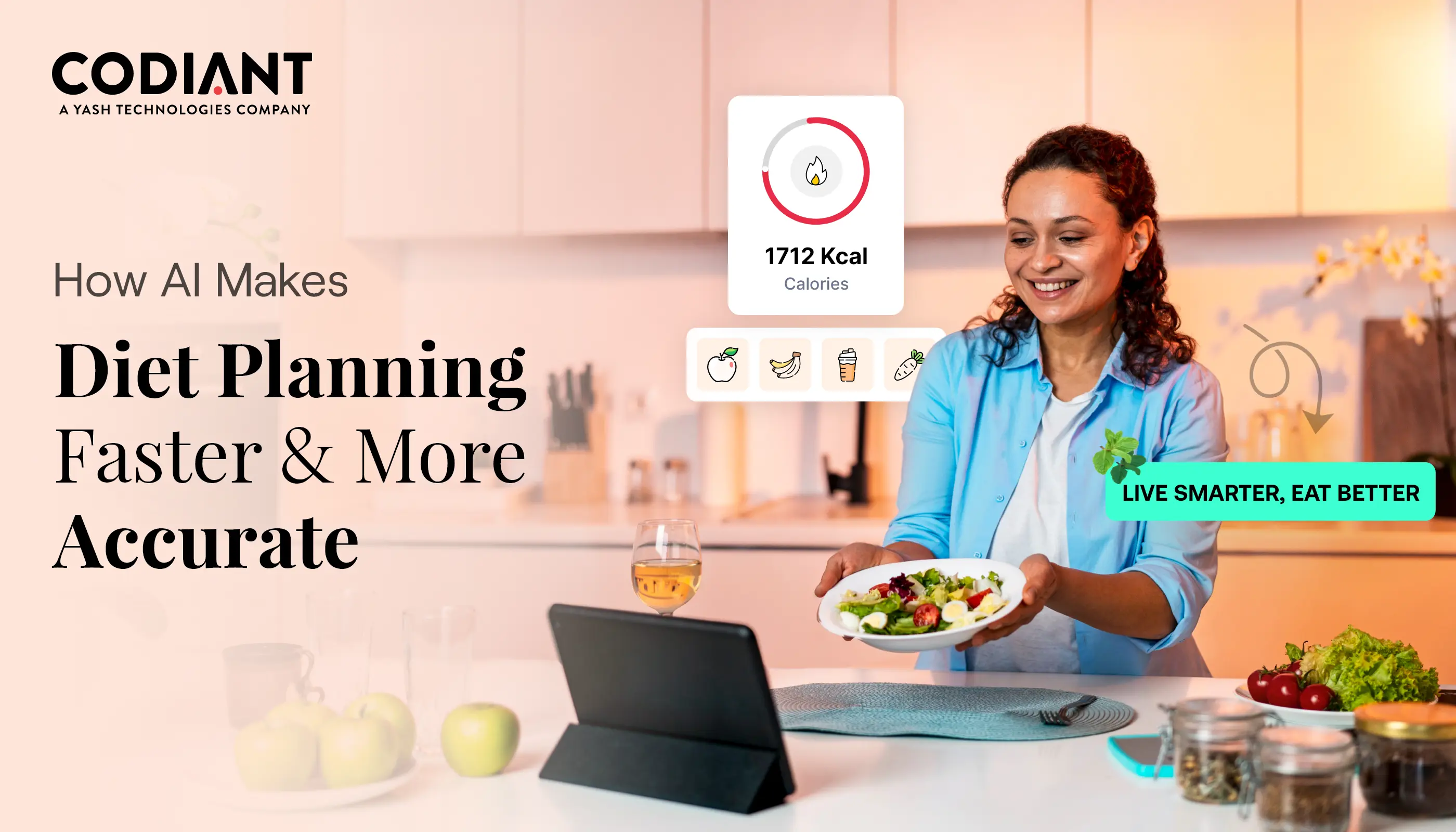How To Build A Chatbot with Natural Language Processing?
Table of Contents
Subscribe To Our Newsletter

Humans are always likely to explore new strategies to simplify their lives by making upgrades through innovation. Earlier, chatbots were no less than a gimmick, which seemed fascinating but weren’t of real benefit. However, with passing time and evolving technologies chatbots have now become a quite fulfilling and demanding tool in the corporate industry.
The implementation of Natural Language Processing in Chatbots has made a significant mark in recent times. The intelligent chatbot with NLP enables bots to read text, hear speech, interpret it, understand sentiments, and determine other aspects. Such automation of customer assistance, regardless of any industry-specific allows companies to actively adopt chatbots to upgrade their customer services, and operations, minimize errors, and save time and money simultaneously.
Such advanced assistance strives for businesses to provide relevant information at any time, any place. This results in an unavoidable demand among companies to scale their business. If you are the one looking to build a chatbot suitable for your business needs, then without much ado, let’s proceed to understand building a chatbot with NLP.
Chatbot Market Statistics
- The global Chatbot market size valued in 2020, was USD 430.9 Million.
- In 2021, the Chatbot Market Size was valued at USD 525.7 Million.
- The revenue is estimated to reach the figure of USD 2,485.7 Million by 2028, with a growth rate of CAGR of 24.9%.
- More than 35% of respondent consumers like to see more companies provide chatbot features on their platform.
Overall, the demand for Chatbots is increasing among businesses and customers as well. Therefore, before analyzing the process to build a Chatbot with Natural Language Processing, let’s have a glance over NLP and Chatbot.
What is Natural Language Processing (NLP)?
Natural Language is a human-understandable and communicable method, and Programming language is a set of rules defined by humans that are machine-understandable to conduct a specific task.
Natural Language Processing is medium to establish communication between humans and machines, where it allows the machine to view and process information or commands from verbal or written user inputs. The NLP model enables computers to deduce and even apply the way humans can communicate.
Unlike general or common word processing operations, the NLP doesn’t consider text or speech as a sequence of symbols. Whereas, it considers the hierarchical structure of natural languages, such as words make phrases, phrases design sentences, and sentences can turn into coherent ideas.
These advanced chatbots learn from their experience, like a human, and don’t only look for keywords. Therefore, NLP uses pre-programmed and acquired knowledge to decipher the intent and meaning of the entered sentence structure, idioms, content, etc. It empowers multiple fields of computer science and deals with the concern to interact with the machine and human-understandable language. The NLP-based software supports a variety of features, such as;
- Auto-Complete: In Search Engines, like Google, Bing, and Yahoo
- Personal Assistants: Siri, Google Assistant, Cortana
- Machine Translation: Google Translate
- Spelling Check: Email, browser, social media, desktop apps (like MS Word), IDEs like Visual Studio
What is a Chatbot?
Chatbots are automated robots that communicate with humans in a natural format. The communication format includes texts and audio using Artificial Intelligence (AI). A chatbot is designed to work and respond to customers without any human-operated assistance. The AI chatbots respond to the query of the customer as it were a real person, and the responses usually are a combination of pre-programmed scripts and machine learning algorithms.
AI-based chatbots are dynamic in nature so they can learn from previous interactions. Subsequently, it becomes more intelligent to tackle complex and a variety of conversations. Whenever a question is fired, the chatbot responds to it by undergoing the available knowledge database.
In contrast to that, if a chatbot gets exposed to such a question for it isn’t programmed to understand, then it will transfer the call to the human operator or provide a message like it is not designed to answer such a query. It learns from such interactions and formulates accurate responses to deal with them in the future.
What are the types of Chatbots?
Modern chatbots rely on Natural Language Processing (NLP) and Artificial Intelligence (AI) to figure out the user’s intent from the context of their input and present relevant responses. Thus, based on the response-generation method, Chatbots can be divided into 3 types.
- Scripted or Rule-based Chatbots The scripted or rule-based chatbots follow a set of pre-defined rules for that only the tool can respond to the query posted by the user. It is quite a straightforward bot, yet the most widely spread bot. Most the industries are using such type of a chatbot, which includes e-commerce, social media, or live chat. However, these chatbots fail to comprehend the context of the query or intention. It is quite easier to build a chatbot on this concept, as it relies on a baseline of the “true-false” algorithm. The chatbot simply identifies the question and answers it accordingly, apart from that more improvements can be introduced by developers to enhance the service quality.
- AI-based Chatbots The AI-enabled chatbots are based on NLP and quite intelligently analyze the context of the subject and its structure using a combination of advanced technologies i.e., Artificial Intelligence, Machine Learning, and Natural Language Processing. These technologies provide a human touch to the chatbots, additionally, they learn and enhance their horizon of knowledge after every interaction. The chatbots with NLP can communicate to customers via text or speech, under the customer support programs on the website or mobile applications. These chatbots can quickly switch between customers or can handle multiple customer queries effectively at a time.
- Hybrid Chatbots As the name suggests, Hybrid Chatbots are a combination of both Rule-based and AI-based chatbots. The chatbot uses scripts and NLP to infer user queries and generate the response. It is trained to deliver specified results for the query and can also understand user intent due to NLP technology. The database of Hybrid Chatbots is easier to edit or update but has restricted conversational abilities, as compared to AI-based chatbots.
How can businesses build chatbots with NLP effectively?
Establishing objectives, guaranteeing human-like interactions, choosing suitable channels and technology stacks, integrating NLP, extensive testing, analysis, training, and ongoing updates are all part of developing chatbots with natural language processing (NLP). The size of the project determines the cost, with minor projects costing between $2,000 and $10,000 and major projects costing more than $100,000.
Benefits of Chatbots For Customers and Businesses
For Customers:
- Customers can expect instant and round-the-clock responses without any delay.
- Chatbots can reply attentively to multiple customers at a time.
- Businesses can attain consistency in answers and enhance customer experience.
- Chatbots can deliver a personalized user experience with a natural tone while building interactive communication.
- The Chatbots with NLP is open for Omni-Channel messaging support, such as websites, Facebook, etc.
- The automated chatbots support users to make orders or transactions without any human intervention or assistance.
- The chatbots can answer multilingual queries, which helps a variety of customers to get their queries resolved.
For Companies
- The Chatbot development supports businesses to engage more users and build an interactive environment.
- Chatbots with NLP are quite advanced that assist the customer in making the decision and tracking their journey on-site to improve lead generation.
- Chatbots can attend to customer queries without the support of any manpower, thus businesses can save a lot of bucks on manpower customer service, in training, and providing infrastructure to each attendant.
- Chatbots are excellent customer assistants that can analyze customer behavior and monitor user data, or extract users’ perceptions through some basic questions about the product and their requirements to gain insights. It helps to market the product differently to attract more users.
- Chatbots can interact with users in real-time and takes customer feedback that help businesses to strategize in increasing sales and directing the customer to the right place which results in driving the conversion rate.
- The AI technology with NLP chatbot development supports businesses to deliver seamless customer support. It can provide real-time support with a human touch while identifying the user intent.
- As chatbots are getting smarter day by day, businesses can automate frequent and common interactions to meet customer expectations.
- The chatbots are an effective tool to scale customer support without any additional human assistance and investments, such as during the festival season or during peak hours.
- Customers like being guided or assisted while exploring the platform, through tutorials or content guides. These chatbots can do that effectively by streamlining the customer onboarding process.
- No business likes to lose any prospective customer mid-way through the sales, here come chatbots in the frame that helps in minimizing the customer churn rate and make the customer journey smoother.
How to Build a Chatbot with Natural Language Processing?
1. Define and Set Goal
To develop a chatbot with NLP solutions, the first and foremost step is to analyze the goals that a business requires to achieve with a Chatbot. Then, precisely define all the functions that should be implemented in the tool. Define the purpose and role of the chatbot in business and evaluate how it will help the business in terms of human efforts, business efficiency, time, or any other aspect.
Post that, set the feasible goals that you like to achieve with the chatbot. Such as a definite set of instructions that yields appropriate and systematic outputs. In addition to the business goals, the additional benefit would be when you analyze and understand your customer’s goals, as what they expect from the business.
Though it is suggested, initially aim for straightforward and simplistic goals, and gradually move on to more complex ones. Periodically, the goals can be modified with the progress in technologies and transformation in customer requirements.
2. Make Sure Your Chabot Doesn’t Sound Robotic
Chatbots are developed for customer assistants who are humans, so if you are genuinely aiming to improve the customer interaction, then ensure the chatbot doesn’t seem like an automated machine. To avoid such a scenario, it is recommended to use Artificial Intelligence and Natural Language Processing to make text and voice-based response feels and sounds more like a human and easy to understand.
It can be taken care of as, the chatbot should reflect the humanized voice texture and always remains in the character, no matter the number of working hours, customer queries faced, etc. This will help to assign a personality to the chatbot which seems suitable for the business in customer support. Another aspect that needs to be taken care of while building chatbots is avoiding jargon and complicated English words.
3. Define Channel and Technology Stack
To build a profitable and user-friendly chatbot, explore suitable tools and frameworks that can effectively meet the user’s expectations. Frameworks could be the suitable technologies to develop a complex, yet profitable chatbot which meets customer support services as the user expects. Whereas, preferring tools over framework will limit the functionality of chatbot development.
Chatbot developers usually prefer the Twilio platform to build an NLP chatbot, whereas for text chatbots the most suitable platforms are Viber, Hangouts, or Telegram. The popular and commonly used tech-stack for chatbot development are as follows;
- Python Programming Language: Used to design and develop the architecture of the NLP chatbot.
- Pandas: A software library build on Python programming language to carry out data analysis and processing for the chatbot.
- TensorFlow: A library, usually used for Machine Learning and Neural Network processes or tasks that support chatbots to understand user intents.
- SpaCy: An open-source software library that supports Natural Language Processing, while specifying the users’ intentions through this advanced library.
- Twilio: The developers can use programmed web service APIs to make and receive voice calls, send and receive text messages, and can perform multiple functions that are required during the communication.
- Viber, Hangouts, or Telegram APIs: To integrate NLP chatbots with the website or messaging apps.
4. Development and NLP Integration
After research, analysis, and tech-stack decision, now is the time to plan for chatbot development. The development team can accurately implement AI, ML, NLP, scripting, and business logic integration on all virtual platforms and operating devices. The chatbot script development should be based on an accurate understanding of the business process that should be clear, concise, and consistent.
Chatbot with NLP transforms user texts and speech into well-organized data that can be understood by a machine. The overall chatbot NLP development process comprises multiple steps and is as follows;
- Tokenization- It is also known as Lexical Analysis. Under this step, the chatbot development starts by dividing the texts of a sentence into small chunks i.e., ‘tokens’, and removing punctuations based on their meaning and relationship with the entire statement.
- Normalization- It is also known as Syntactic Analysis. The bot then filters the texts with typos errors, common spelling mistakes, or slang, and converts those words into their standard form or ‘normal’ version.
- Entity Recognition- After fragmentation and text normalization, the chatbot deduces to understanding the meaning of the text or topic of the conversation by analyzing the keywords.
- Semantic Analysis- The bot then identifies the nouns, verbs, objects, and phrases which helps to understand the meaning of the sentence. It can be done individually by learning each words meaning and relation to the whole structure.
5. Testing
Testing is the key factor in the success of any chatbot, thus it is suggested to have a diverse team to implement real-user testing. To attain consistency and accuracy in the Natural Language the continuous testing process is recommended. Even after the deployment of a chatbot, regular testing should be conducted to review the chatbot components at frequent intervals. On requirement, you can provide updates and improvements in the NLP chatbot to make it more accurate and interactive.
6. Analysis, Training, and Update
After the deployment of Chatbot in the market, it is time to thoroughly evaluate its work. It can be done by extracting updates from the users. To make this possible, you can gather user feedback or personally interact with users to understand user preferences while interacting with the chatbot. Such, interactive sessions and the addition of user-based updates can promote the chatbot market and enhance the user interaction experience with the bot over time.
For training purposes, define the use cases of chatbots and identify your unique and distinctive goals, such that your entities serve a purpose. Thus, ensure that the chatbot should be updated regularly.
How Much Does It Cost To Build a Chatbot?
Usually, businesses consider that the chatbot development will cost them a fortune. In contrast to that, it is simply a myth while performing the chatbot cost calculation process.
The cost to build a chatbot usually falls under various influential factors, it includes the type of chatbot, technology stack, number of features integrated, in-house development or not, and the number of requested capabilities with data analysis algorithms. The size of the project is the major considered point while analyzing the cost to build a chatbot with NLP.
Considering the project division based on their size i.e., small, medium, and large. The projects are scalable and always have the scope for improvement, so start with small and gradually expand or update the chatbot services.
- A Small Size Chatbot Development Project ranges from $2,000 to $10,000.
- A Medium Size Chatbot Development Project ranges from $10,000 to $50,000.
- A Large Size Chatbot Development Project ranges from $40,000 to $100,000 and more.
Conclusion
Smart solutions ensure the success of any business, and the introduction of chatbots could do the same. But, only developing the chatbot won’t help, rather the quality and delivery of customer expectation is more important than need to be introduced in the chatbot based on the business market. And that’s where Codiant steps in to be the solution provider.
Codiant delivers advanced conversational solutions powered by modern automation and intelligent workflows. As an AI chatbot development company, we bring together a skilled team of developers experienced in leading chatbot frameworks, API integrations, and AI-driven technologies. Our experts design and build scalable, high-performance chatbot systems tailored to each client’s goals. With deep proficiency in artificial intelligence, machine learning, deep learning, and natural language processing, we ensure every solution is flexible, future-ready, and capable of evolving with growing business needs.
Featured Blogs
Read our thoughts and insights on the latest tech and business trends
How AI Helps eCommerce Businesses Scale Faster: 10+ Proven Strategies
- December 4, 2025
- Artificial Intelligence E-commerce
Running an eCommerce business today means managing more products, more customers, and more data than most teams can handle manually. As order volumes rise, tasks like customer support, inventory planning, product discovery, and marketing start... Read more
How to Choose the Right AI Solutions for Your Existing App
- December 1, 2025
- Artificial Intelligence
Businesses today are under pressure to move faster, deliver personalized experiences, and operate with greater accuracy. This is why many enterprises and startups are now looking for ways to add AI features to their mobile... Read more
How to Enable AI for Smart Diet Planning and Client Progress Tracking
- November 26, 2025
- Artificial Intelligence
Smart diet planning and consistent progress tracking have become essential in a world where people want faster, more accurate ways to manage their health. Traditional methods like manual calorie counting or generic meal charts often... Read more




